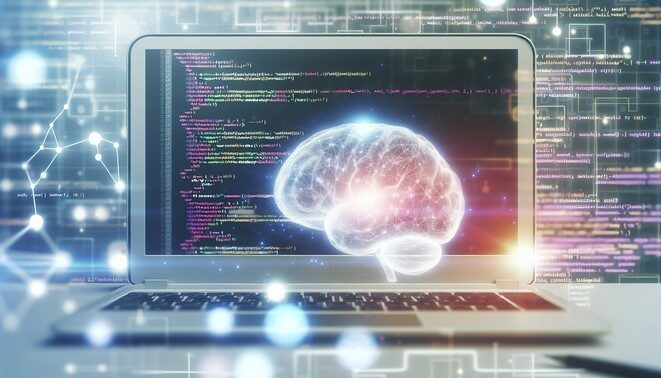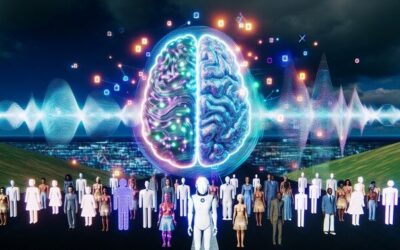“`html
Introduction to Python in the World of AI
Python has secured its position as the dominant language for artificial intelligence (AI) development, primarily due to its simplicity and readability which facilitate rapid prototyping and programming. Its clean syntax significantly reduces the learning curve for beginners, allowing developers to focus on solving problems rather than getting bogged down by complex code structures [Source: Towards Data Science].
Another compelling advantage of Python is its extensive ecosystem of libraries tailored for AI and machine learning, such as TensorFlow, Keras, and Scikit-learn. These libraries provide robust tools for building and training neural networks, thus simplifying complex AI tasks [Source: Analytics Vidhya]. This rich selection of resources not only accelerates development but also enhances performance and accuracy in implementing AI solutions.
Moreover, Python is backed by a vibrant community that contributes to its continued growth and evolution. The availability of forums, tutorials, and shared projects fosters an environment of collaboration and innovation, making it easier for developers to seek assistance and improve their skills [Source: Real Python]. This community support is instrumental in keeping Python at the forefront of AI development, encouraging contributions that enhance existing frameworks and facilitate the creation of new ones.
In summary, Python’s simplicity, powerful libraries, and strong community make it the preferred choice for developers looking to delve into the world of AI. Its features not only attract newcomers but also satisfy the complex needs of seasoned developers, making it a versatile and effective programming language for any AI project.
Essential Python Libraries for AI
Python boasts a range of powerful libraries that significantly enhance the development and deployment of Artificial Intelligence (AI) projects. Here’s a closer look at the essential libraries that every AI practitioner should consider integrating into their workflow.
1. TensorFlow
Developed by Google, TensorFlow is an open-source library designed for numerical computation using data flow graphs. Its flexible architecture allows easy deployment on various platforms, from CPUs to TPUs. TensorFlow is particularly favored for building deep learning models, enabling developers to quickly train and prototype neural networks for a variety of applications including image and speech recognition. Its detailed documentation and robust community support further simplify the learning curve for beginners and experts alike [Source: TensorFlow Official Site].
2. PyTorch
PyTorch offers a dynamic computational graph, making it incredibly user-friendly for both novices and experienced developers. Its inclination towards research makes it a favorite in academia, particularly for projects involving natural language processing (NLP) and computer vision. The library is backed by Facebook and has gained immense traction due to its efficient memory usage and speed when training complex models. PyTorch’s strong community support coupled with extensive tutorials makes it an excellent choice for rapid prototyping [Source: PyTorch Official Site].
3. Scikit-learn
Scikit-learn is an essential toolkit for traditional machine learning models. It provides a wide range of algorithms for classification, regression, clustering, and dimensionality reduction, making it incredibly versatile. Built on NumPy, SciPy, and matplotlib, scikit-learn integrates seamlessly into the Python ecosystem, allowing developers to implement various data preprocessing and analysis features easily. Its user-friendly APIs and excellent documentation make it an indispensable library for anyone dealing with data science tasks [Source: scikit-learn Official Documentation].
4. Pandas
Pandas is the go-to library for data manipulation and analysis. It provides data structures like Series and DataFrames that facilitate handling of structured data efficiently. Whether it’s cleaning data, performing exploratory data analysis, or merging datasets, pandas simplifies these tasks with its rich set of functions. Its integration with other libraries like NumPy and Matplotlib enhances its functionality, making it an essential tool in the data preparation phase of AI projects [Source: pandas Official Documentation].
By leveraging these libraries, developers can harness the full potential of Python for their AI projects, driving innovation and efficiency across various domains.
Building Your First AI Model with Python
Creating your first AI model with Python may seem daunting, but the process can be broken down into manageable steps. Here’s a straightforward guide to help beginners navigate through data preparation, model selection, training, and evaluation.
1. Data Preparation
Data is the cornerstone of any AI model. Begin by collecting a relevant dataset, which can come from various sources such as CSV files, databases, or online repositories like Kaggle. Once you have your data, preprocessing is essential. This involves cleaning the data (handling missing values, removing duplicates), transforming categorical variables using techniques like one-hot encoding, and normalizing or standardizing numerical features to ensure that they function well with machine learning algorithms. For more details on data preprocessing, check out this resource on data cleaning techniques [Source: PV Magazine].
2. Model Selection
After your data is prepared, select a machine learning model that fits your problem. For classification tasks, algorithms like Logistic Regression or Decision Trees can be a good start. If you’re dealing with numerical prediction, consider regression models. The choice depends on your data and the specific problem you’re addressing—whether it’s supervised (with labeled output) or unsupervised. Check relevant model choices in machine learning [Source: Farmonaut].
3. Training the Model
Once your model is selected, split your dataset into training and testing subsets, usually in a 70-30 or 80-20 ratio. Use the training set to fit your model using libraries such as Scikit-Learn. For instance, calling model.fit(X_train, y_train) will train your model on the training data. Make sure to tune hyperparameters using techniques like cross-validation to optimize model performance.
4. Evaluating the Model
The final step is evaluation. Use the testing set to assess your model’s accuracy and performance metrics such as precision, recall, and F1-score for classification tasks or RMSE for regression. This will offer insights into how well your model performs on unseen data. For a deeper dive into evaluation methods, explore guides available on model evaluation techniques [Source: Nature].
By following these steps, you’ll be well on your way to creating your first AI model using Python!
Integrating AI with Data Science using Python
Integrating artificial intelligence (AI) with data science using Python unlocks powerful capabilities for processing and analyzing complex datasets, ultimately enabling the development of robust AI applications. This synergy is manifested through several key aspects:
- Data Handling and Analysis: Python excels at managing vast amounts of data thanks to libraries like Pandas and NumPy, which facilitate data manipulation and mathematical calculations. These libraries allow data scientists to efficiently clean, analyze, and visualize data, thereby laying a solid foundation for AI models. For instance, incorporating numerical libraries like NumPy enables high-performance computations required for AI training.
- Machine Learning Frameworks: Python boasts numerous powerful libraries for machine learning, such as Scikit-learn for traditional algorithms and TensorFlow or PyTorch for deep learning. These frameworks support a wide array of tasks, from classification and regression to complex neural network implementations. This enables data scientists to implement machine learning models quickly and efficiently without extensively studying underlying algorithms.
- Collaboration and Integration: Data science often involves collaboration across different teams and disciplines. Python’s versatility allows for integration with various data sources, APIs, and databases, facilitating collaboration in building AI applications. Moreover, Jupyter Notebooks offer an interactive development environment where data scientists can document their work alongside code, enhancing transparency and reproducibility.
- Real-world Applications: The intersection of AI and data science powered by Python finds applications across multiple domains, including healthcare, finance, and agriculture. For example, precision farming utilizes AI to analyze sensor data and optimize agricultural practices, significantly enhancing productivity and sustainability. This showcases how AI can lead to actionable insights when paired with comprehensive data analysis, as noted in discussions on smart farming technologies.
- Continuous Learning and Improvement: As models are deployed, the ability to analyze incoming data allows for ongoing adjustments and improvements. Python’s ecosystem, combined with frameworks for model monitoring, supports the iterative nature of AI development, empowering data scientists to refine models based on real-time data feedback.
In summary, harnessing Python’s capabilities facilitates a seamless integration of AI into data science workflows, fundamentally transforming how organizations analyze data and develop intelligent applications. This integration not only enhances operational efficiencies but also drives innovation across various sectors. For a deeper understanding of how these technologies work together, further exploration of specific case studies and applications may be beneficial.
Future Trends: Python and AI Evolution
The future of AI integrated with Python is rapidly evolving, shaped by emerging trends and innovative tools. One key direction is the rise of automated machine learning (AutoML) platforms, enabling users to build models without extensive programming knowledge. Tools like Google’s AutoML and H2O.ai are becoming increasingly popular, allowing more practitioners to leverage the power of AI [Source: Towards Data Science].
Another significant trend is the integration of Python with cloud platforms. With the increasing adoption of cloud services, AI applications can now scale more efficiently. Platforms like AWS and Microsoft Azure offer robust environments for deploying AI models, enhancing their reach and functionality [Source: AWS]. This shift not only democratizes access to advanced AI tools but also accelerates innovation by streamlining the process of experimentation and deployment.
Artificial intelligence in data analytics sees expanding opportunities thanks to Python. Libraries such as Pandas and NumPy continue to enhance data manipulation and analysis capabilities. These tools are vital for businesses looking to gain deep insights from massive datasets, thus improving decision-making processes [Source: Analytics Vidhya].
Moreover, emerging applications in natural language processing (NLP) and computer vision are set to revolutionize industries. Python frameworks like TensorFlow and PyTorch are leading the charge in developing more intelligent applications, from chatbots to image recognition systems that can analyze thousands of data points in milliseconds [Source: Analytics Insight].
To stay ahead in this fast-evolving landscape, professionals should focus on continuous learning and adapting to these trends. Engaging in communities, participating in online courses, and experimenting with new tools and frameworks can significantly enhance skills and maintain a competitive edge in AI and Python applications. For a deeper dive into upcoming technologies and best practices in Python, check out our article on best practices in Python and future trends.
Sources
- AWS – What Is Machine Learning?
- Analytics Insight – Natural Language Processing (NLP) and Its Importance in Business Dynamics
- Analytics Vidhya – Top Python Libraries for Data Science in 2021
- Analytics Vidhya – 10 Popular Python Libraries for Machine Learning
- Towards Data Science – 5 Reasons Why Python Is the Go-To Programming Language for AI
- Towards Data Science – The Importance of AutoML Tools in Machine Learning
- Real Python – The Python Community
- TensorFlow Official Site
- PyTorch Official Site
- scikit-learn Official Documentation
- pandas Official Documentation
- Nature – Model Evaluation Techniques
- PV Magazine – Open Source Tools to Build Self-Made Management System for Surplus PV Power
- Farmonaut – Cloud Computing for Agriculture: 5 Smart Cloud Farming Uses
“`




